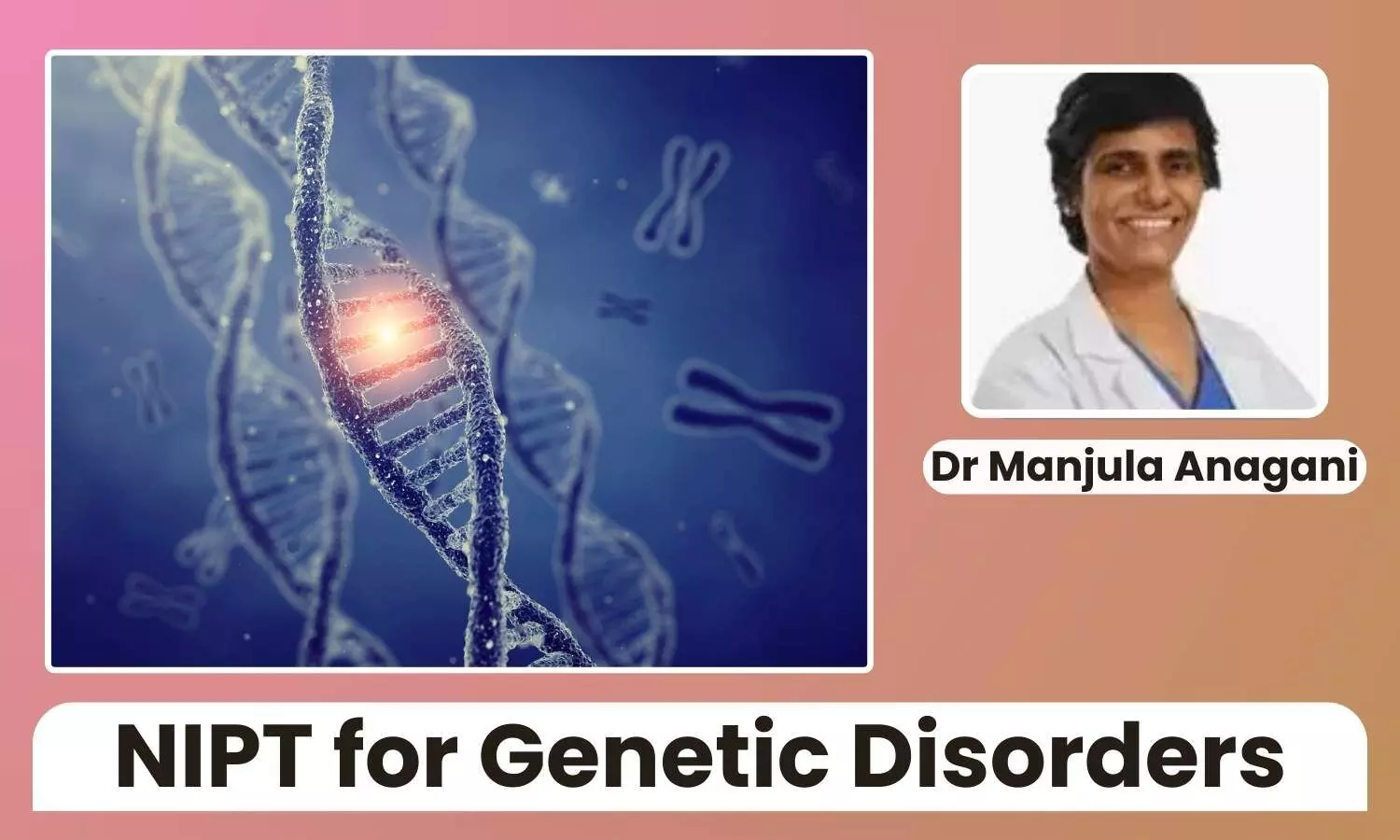Non-Invasive Prenatal Testing (NIPT) for Genetic Disorders: Revolutionizing Prenatal Screening - Dr Manjula Anagani

Expectant parents eagerly anticipate their child's birth, yet health concerns often linger in their minds. Over time, prenatal screening dramatically improved through innovative advancements, enabling early detection of genetic disorders. One such breakthrough is Non-Invasive Prenatal Testing (NIPT), fundamentally changing how we assess fetal wellness.
What is NIPT?
Non-Invasive Prenatal Testing (NIPT) is a simple blood test that analyses cell-free fetal DNA circulating in the mother's bloodstream. This highly advanced test can detect common genetic conditions such as Down syndrome (Trisomy 21), Edwards syndrome (Trisomy 18), and Patau syndrome (Trisomy 13) with remarkable accuracy.
Unlike traditional diagnostic methods such as amniocentesis or chorionic villus sampling (CVS), which carry a risk of miscarriage, NIPT is completely safe for both the mother and the fetus.
This test is typically recommended for pregnant women as early as the 10th week of gestation, providing crucial genetic insights without the risks associated with invasive procedures.
Why is NIPT Increasing in Popularity?
NIPT's growing adoption stems from its accuracy, safety and ease. Studies show NIPT detects over 99% of Down syndrome, markedly decreasing invasive procedures' necessity.
Case Study
One of the most compelling scenarios involved a 34-year-old expectant mother, Priya (name altered for privacy). During routine examination, her gynaecologist recommended NIPT due to age risk factors. Shockingly, results signalled a high probability of Trisomy 21.
Despite receiving discouraging news, Priya and her husband were able to make informed choices thanks to the early discovery. Genetic counselling provided understanding of their options, allowing them to emotionally and financially prepare for the specialized care their child may require.
This swift intervention assured a smoother transition to parenthood, with the proper support systems established from the very start.
How NIPT is Reducing the Need for Invasive Procedures
Traditionally, prenatal genetic screening relied heavily on methods like amniocentesis, which involves extracting amniotic fluid using a needle. Though accurate, the procedure carries a 1 in 300 to 1 in 500 risk of miscarriage. NIPT, on the other hand, offers a risk-free alternative while maintaining high sensitivity and specificity.
A 29-year-old woman, whose name has been changed to Anusha, was informed after her first-trimester screening that her baby may have a genetic abnormality. Understandably distraught, she was advised to undergo an invasive process for confirmation.
However, she opted for NIPT first. Reassuringly, the outcomes eliminated concerns for her baby's health, doing away with the necessity for amniocentesis and sparing her from associated hazards.
This instance highlights how NIPT can prevent unnecessary invasive tests, reducing strain for expectant parents while guaranteeing their baby's safety.
Who Should Consider NIPT?
Although NIPT is recommended for all pregnant women, certain groups benefit more significantly:
- Women aged 35 or older, who have a higher risk of chromosomal abnormalities
- Those with abnormal results in first-trimester screening tests
- Expectant mothers with a family history of genetic disorders
- Women who have had a previous pregnancy affected by chromosomal abnormalities
Limitations of NIPT
Despite its high accuracy, NIPT is not a diagnostic test but a screening tool. A positive result should always be followed up with confirmatory testing, such as amniocentesis or CVS, to ensure absolute accuracy.
Additionally, NIPT primarily detects common chromosomal abnormalities. While newer versions of the test are expanding their capabilities, they do not yet provide comprehensive genetic insights into all possible disorders.
Future Prospects for Prenatal Screening
With persistent innovations in medical engineering, NIPT is becoming more obtainable and affordable. Exploration is presently under approach to increase its applications, like identifying unusual genetic problems and fetal states past chromosomal irregularities.
Conclusion
The emergence of Non-Invasive Prenatal Testing (NIPT) is revolutionizing prenatal attention, offering expecting mothers a safer and more precise way to screen for genetic issues.
By decreasing the necessity for invasive processes and furnishing crucial insights early in pregnancy, NIPT is paving the route for a healthier, more informed tactic to prenatal attention. For those thinking about NIPT, consulting with a competent healthcare expert is crucial.


